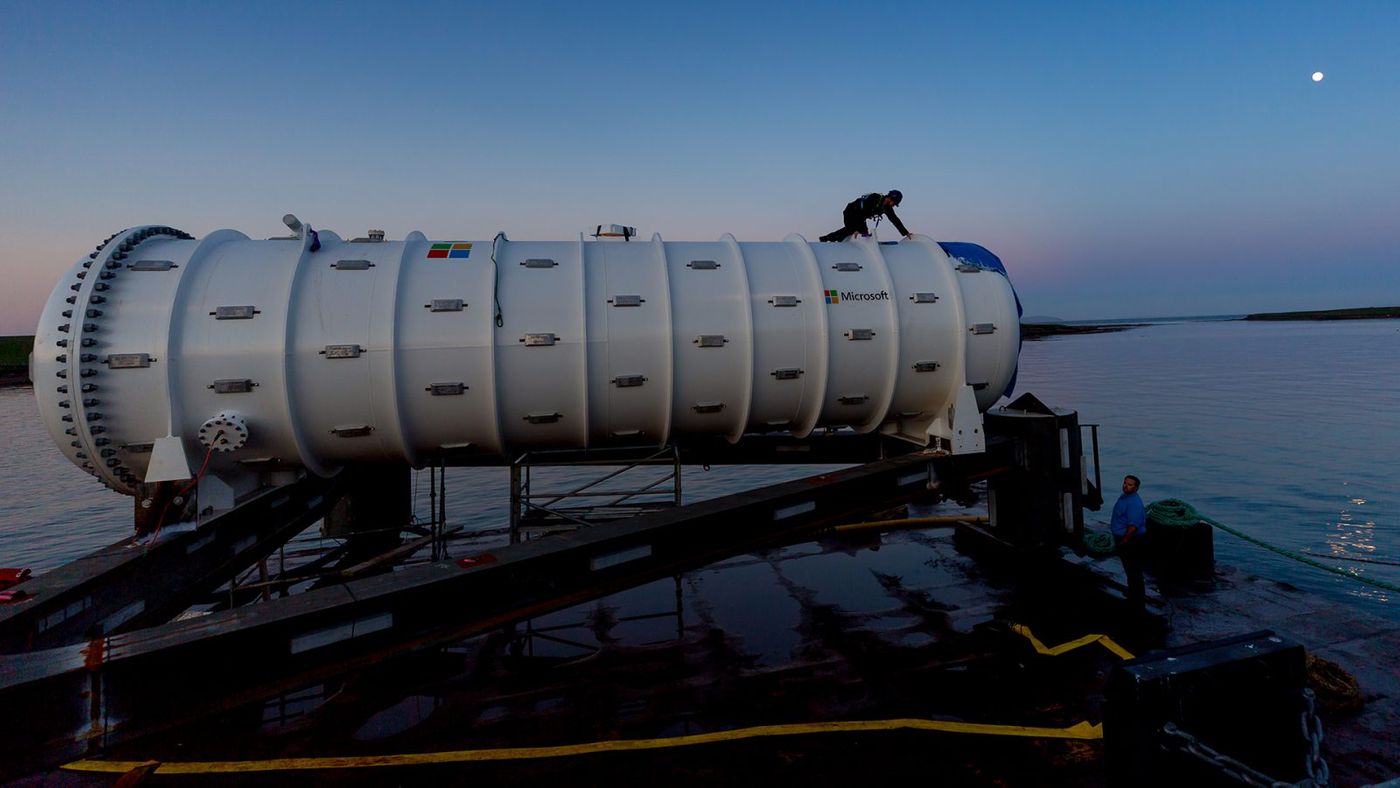Sunken Data Center Powered and Cooled by Ocean, via Microsoft
In June 2018, Microsoft’s new data center launched underwater off the coast of Scotland. It is run and cooled by natural ocean forces. It is an initiative of the tech giant’s Project Natick, a research endeavor exploring the creation of environmentally sustainable data centers units that can operate on the seafloor for years at a time. The goal is to also make the installments prepackaged and able to be ordered to size and deployed quickly.
“That is kind of a crazy set of demands to make. Natick is trying to get there,” Peter Lee, corporate vice president of Microsoft AI and Research and leader of New Experiences and Technologies, or NExT, said.
A data center holds computer systems and components. This one holds 12 racks of computers and 864 servers, 117 feet down on the rock slab seafloor. It is intended to process and hold data for five years without maintenance. The 40-foot-long shipping container-sized submarine-like vessel is now positioned off the coast of the Orkney Islands of Scotland to provide improved internet access to areas near the water. Chief Executive of Microsoft U.K. Cindy Rose said:
Almost half of the world's population lives near large bodies of water. Having data centers closer to billions of people using the internet will ensure faster and smoother web browsing, video streaming and gaming, while businesses can enjoy AI-driven technologies.
The sunken, tubular center has a temperature management system that relies on the surrounding waters for cooling. It runs on renewable energy from the European Marine Energy Center or EMEC. EMEC uses tidal turbines and wave energy converters to generate electricity from the sea’s natural movement. After being assembled and tested in France, the vessel was deployed from EMEC. When running full-force, the data center uses less than a quarter of a megawatt or MW of electricity.
While most people’s electric bills are measured in kilowatt-hours or kWh, big data centers use MW. One MW is 1,000,000 watts. New or renovated data centers often have close to 3 MW of capacity, according to a 2013 data center survey.
The idea for an underwater, eco-friendly data center was first presented during a Microsoft event called ThinkWeek. Project Natick formed in July 2014, and 12 months later a prototype of this type of oceanic facility was tested in California, which operated for 105 days.
The Orkney Islands are known for successful renewable energy deployment. Onshore wind turbines create more energy than is needed to supply the 10,000 residents.
Scottish Energy Minister Paul Wheelhouse said:
With our supportive policy environment, skilled supply chain and renewable energy resources and expertise, Scotland is the ideal place to invest in projects such as this. This development is, clearly, especially welcome news also for the local economy in Orkney and a boost to the low carbon cluster there.
Along with being an innovative breakthrough in sustainably-powered data center design, the Northern Isles test is designed to evaluate how modular centers will fare in patches of sea known to be rough. Waves of 10 feet are common in this area, increasing to more than 60 feet in storms.
During the next year, the Project Natick team will track and monitoring the data center’s performance, evaluating factors including sound and temperature levels, power usage, and internal humidity.
Sources:









